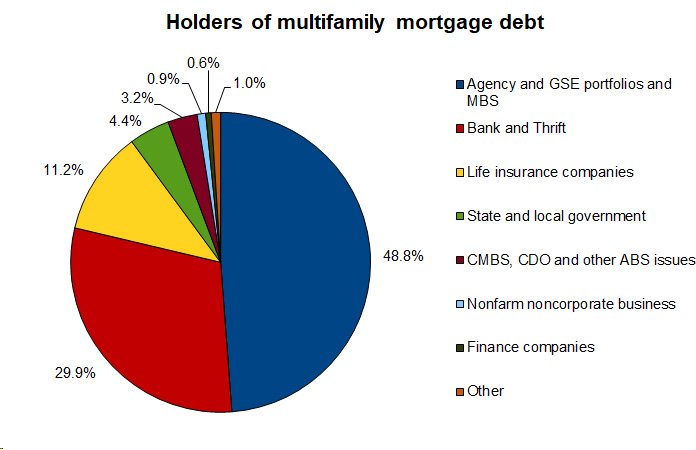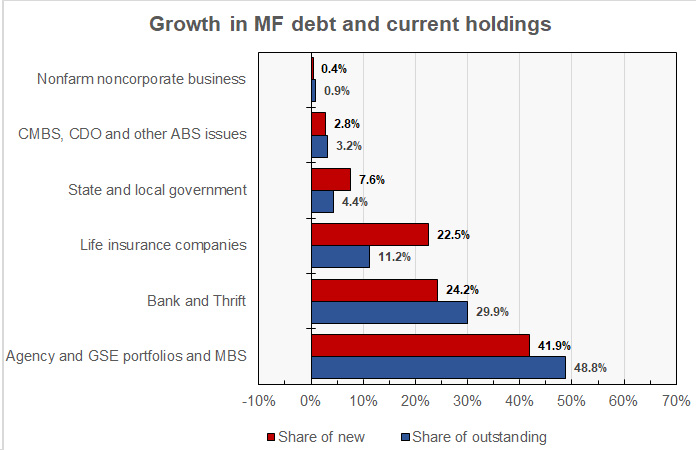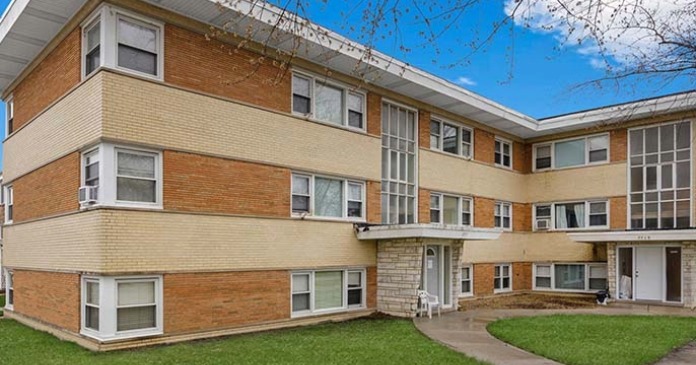The Mortgage Bankers Association (MBA) reported that multifamily mortgage debt outstanding rose by $19.35 billion in Q2 from the revised level of the quarter before. Total multifamily debt reached a level of $2.090 trillion. Compared to the year-earlier level, debt was up $29.6 billion (1.4 percent).
The growth in multifamily mortgage debt outstanding in Q2 was actually down 18 percent from that originally reported for Q1. However, the debt outstanding in Q1 was revised lower by $28.3 billion in the latest report. This decrease was largely driven by a $27.3 billion reduction in the reported level of multifamily debt held by state and local governments.
The total of all commercial mortgage debt, including multifamily debt, outstanding at the end of Q2 rose 0.7 percent from its Q1 level to $4.692 trillion. Multifamily mortgage debt represented 44.6 percent of commercial mortgage debt outstanding.
Earlier, the MBA had reported that multifamily mortgage originations had risen 27 percent in Q2. The Q2 2024 multifamily mortgage originations index was reported to be down 14 percent from its level in Q2 2023.
Visualizing market share
The shares of multifamily mortgage debt held by various classes of suppliers are shown in the first chart, below.

Of the increase in multifamily mortgage debt outstanding in the quarter, $8.11 billion, or 41.9 percent, was held by “Agency and GSE portfolios and MBS”. These are agencies, like the Federal Housing Administration and Government Sponsored Enterprises (GSEs) like Fannie Mae and Freddie Mac, who buy up mortgages and sell some of the debt as Mortgage-Backed Securities (MBS). At the end of Q2, the GSEs holdings of multifamily debt fell 0.1 percentage point to 48.8 percent of the total outstanding.
Banks and Thrifts, the second largest holders of multifamily mortgages, increased their holdings by $4.69 billion. The Q2 figure represented 24.2 percent of the increase in multifamily debt outstanding, somewhat lower than their holdings of 30.0 percent of total multifamily mortgage debt outstanding.
Life Insurance companies were reported to increase their direct holding of multifamily mortgage debt by $4.36 billion in the quarter. Their share of total multifamily debt outstanding rose 0.1 percentage point from the revised level of the quarter before to 11.2 percent. However, this figure does not account for the multifamily mortgages these companies hold through commercial mortgage-backed securities (CMBS).
After the massive revision to last month’s data, state and local governments held 4.3 percent of outstanding multifamily mortgage debt at the end of Q1, down from 5.6 percent reported last quarter. They increased their share to 4.4 percent in Q2. They increased their holdings by $1.48 billion to a total of $90.99 billion at the end of the quarter.
CMBS, CDO (collateralized debt obligations) and other ABS (asset backed securities) issuers increased their holdings of multifamily mortgage debt in Q2 by $543 million. Their share of multifamily debt outstanding was unchanged at 3.2 percent.
Who’s growing?
The next chart, below, plots the current share of multifamily mortgage debt outstanding for a given class of lender alongside that class of lender’s share of net new mortgage debt outstanding in Q1. When the latter share is greater than the former, that class of lender is increasing its share of the market.

The chart shows that both the GSEs and the banks share of the increase in multifamily mortgage debt outstanding was lower than their share of current holdings. However, they remain the most important providers of net new mortgage debt, accounting for nearly two-thirds of net new multifamily debt between them.
Life insurance companies grew their holdings at a rate double their share of multifamily mortgage debt outstanding. In Q2, Life insurance companies challenged banks and thrifts for the spot of second-largest increase in holdings of multifamily debt.
State and local governments also increased their holdings of multifamily debt at a rate much higher than their share of current holdings. However, with the huge revisions to their level of holdings shown in this quarter’s report, it is hard to know what conclusion to draw from that.
As was the case last quarter, the shares of the growth in multifamily mortgage debt outstanding of the other lender types in the top 6 were less than their shares of existing mortgage debt. Therefore, they are continuing to become relatively less important as sources of funds.
The report does not cover loans for acquisition, development or construction, or loans collateralized by owner-occupied commercial properties. The full report also includes information on mortgage debt outstanding for other commercial property types. The full report can be found here.













